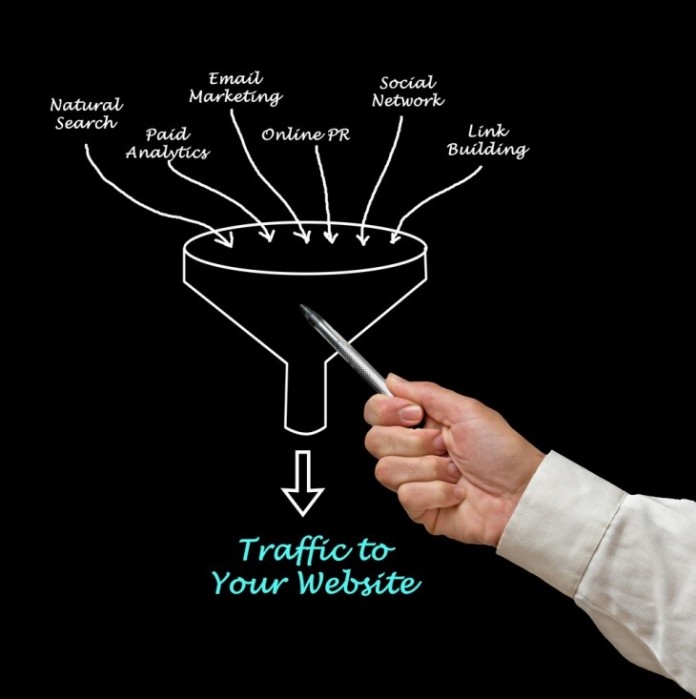You’ve done everything right in digitally marketing your home business: you’ve created a blog full of regularly posted useful content, you’ve organically grown your social media accounts to have loyal followings, you guest post on other influencer sites to expose your brand to new business, and you have a product people fall in love with as soon as they use it. You’ve even scored the top Google search result for a couple of keywords you’re desperate to rank for — so, why isn’t your search engine traffic exploding? You’re probably not using paid search advertising.
A 2014 Google Organic CTR (that’s click-through rate) study by Advanced Web Ranking found the presence of advertisements on a search results page caused organic click-through rates of the first position to drop a massive 30 percent. Even with the coveted top spot, some brands are missing out on web traffic due to native paid search ads that look just like their search result, albeit the “Ad” distinction. Sometimes, the layout of the page even pushes organic results completely to the bottom half, forcing users to take the pains of scrolling in order to discover organic content before just clicking an ad.
The Interactive Advertising Bureau reported in its 2015 Internet Advertising Revenue Report that search continued to lead ad formats from the previous year, accounting for $5.2 billion of Q2 2015 revenues. A major benefit of paid search advertising is businesses can experiment with any budget they want to optimize a campaign. Online advertising agency Disruptive Advertising reports the average cost per click in Google AdWords is only about $1. That click could result in a lifetime customer that exponentially expands your business, which is why your home business should consider making paid search a part of its marketing strategy.
Get Started With Paid Search
Start your paid search strategy by conducting a keyword analysis to determine the keywords related to your brand you want to focus on in your campaigns; commercial keywords are the ones you’ll want to focus on. Discover the intent of a keyword by searching for it on a search engine and viewing if the main results are content-focused or brand-focused. Keywords whose results contain competitors and ads are commercial.
You can also use Google Webmaster Tools to see what keywords people are searching for when they click over to your page. Focusing on words such as these and those that are related can guarantee you always appear at the tops of search results.
After you’ve chosen the keywords you want to focus on in your paid search campaigns, determine the type of campaign you’ll want to run. Testing is essential in any marketing strategy, so consider trying all three types with a variety of keywords to optimize your paid search budget. Paid search types include:
- Cost per click: You only pay when a user clicks on your ad.
- Cost per impression: You pay for the number of times your ad is displayed in search results.
- Cost per acquisition: You only pay when a conversion is completed through your ad.
Paid search is conducted through a bidding system, where your ad will be displayed when the amount you’re willing to pay is higher than your competitors. Bidding high also helps you attract higher positions in the ad results, but even a meager budget can get your ad visible to users. Test, optimize, and test again to find your business’ sweet spot.
Set up a landing page that includes calls to action to encourage conversions after people click through on your advertisement. Entice users to click by writing compelling copy that includes a value-add and a call to action, as well. If your ad is positioned with competitors who present a more attractive offer, you might get impressions that provide no value to your business but that you’ll have to pay for.
 Measure, Analyze, and Optimize
Measure, Analyze, and Optimize
There are endless ways to get closer to your home business’ perfect paid search advertisement. Just a few include:
- Posting the same ad on different search engines, such as Google versus Bing versus Yahoo. Social networks such as Facebook also provide paid search advertising opportunities and can help you reach new audiences
- A/B testing calls to action within copy
- A/B testing paid search headlines
- Posting the same ad, but linking it to different landing pages
- Posting the same ad in different campaign types to determine which one delivers the best return on investment
- Using paid search to test different promotions, including product sales, special offers, and content consumption
If you’re using Google AdWords, connecting the service to free Google Analytics elegantly segments campaigns and makes them easy to understand for paid search beginners. By increasing your paid search budget during optimal times or when you have an especially attractive offer to promote, this form of marketing can powerfully boost your home business.
Find a Home-Based Business to Start-Up >>> Hundreds of Business Listings.
















































